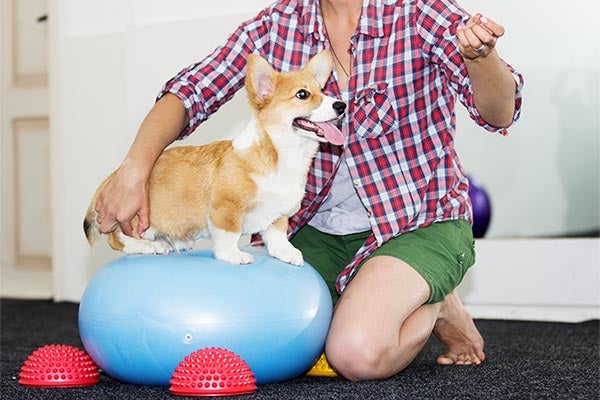
One of the first things most people think about when adding a dog to their family is getting him trained. After all, training will make your new best friend well behaved, whether he’s a family pet or destined for the competition ring. You have a lot of choices when it comes to training these days, including private in-home training, private training at a facility, group classes, and even online courses. All these options can make it difficult to decide whether training your dog at home or in a class setting is best.
Pros to Training at Home

There are certainly a lot of reasons why training at home is a good option. For starters, the schedule is much more flexible, allowing you to work around your personal life. Most trainers who do in-home lessons have a lot more time slots available than are offered for group classes. Online courses let you do the training whenever it is convenient for you — even if that’s 1 a.m.
Aside from scheduling, at-home training is usually tailored to fit your specific training goals, rather than the generalized curriculum of a group class. So, if your dog often bolts out your front door or barks at the neighbor’s cat, you can work on correcting those specific behaviors. You can also move at your own pace, spending more time on a particular command, if need be. And for dogs that are easily distracted or reactive in a group setting, training at home can be a lifesaver.
Training at home also allows you to start teaching your new puppy right away, whereas with group classes, your pup typically has to have had the necessary vaccines before he can begin. Even for an older dog, training at home does lower the risk of your canine companion developing kennel cough or a virus that is making the rounds.
Cons to Training at Home

Of course, there are downsides to everything, and in-home dog training is no exception. One of the biggest drawbacks is that your pup isn’t getting a chance to socialize with and be around other dogs — something you’ll want him to get used to, especially if you plan on doing therapy work, participating in competitions, or simply want to take him for a walk in the park.
Another disadvantage is that your dog is not learning to listen to you outside the home, where distractions abound. Eventually, he’ll need to learn to listen in a chaotic environment. This is something he won’t be exposed to if he’s trained at home.
You’ll also miss out on mutual learning. In a class, you’ll have a chance to watch other dog owners work with their canines and hear the questions they ask the trainer — resulting in shared learning. For example, you and your dog may be struggling with the trainer’s method of teaching a behavior, but a student in the class has a different method that’s worked for her and may work for you.
At the end of the day, you have to decide which option is best for your dog, but it doesn’t have to be one or the other. You might start with in-home training to keep the distractions to a minimum, and then switch to group classes when he’s already learned a few commands. For dogs that are reactive or nervous, private training at a facility can be a nice bridge between the two. It’s a new environment, but you won’t have to worry about other people or pups. If you’re not sure which path to take, talk to a professional trainer. They’ve seen it all!

